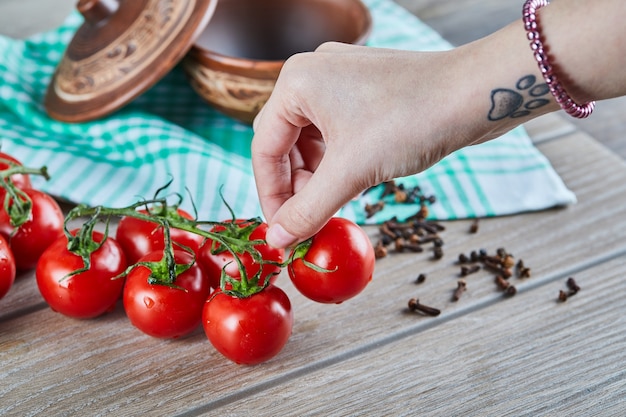Determinate Vs. Indeterminate Tomatoes: What’s The Difference:- The phrases determinate and indeterminate are used to describe the growth of tomato plants; however, these designations also have an effect on fruit sets, trellising techniques, and other aspects of tomato cultivation. To better understand the distinctions between determinate and indeterminate tomato varieties, vegetable grower Briana Yablonski will be your guide. There is a good chance that you have encountered the terms determinate and indeterminate while you are looking for the ideal tomato variety. However, are you aware of the contrasts that exist between these two characteristics of tomato growth? In addition, are you aware of which one is the most suitable for your garden?
Determinate Vs. Indeterminate Tomatoes: What’s The Difference?
The Long Answer
- The manner in which tomatoes are grown is the primary distinction between indeterminate and determinate varieties. This distinction has implications for harvesting, staking, trimming, and other topics! After gaining an understanding of the distinctions between these two groups, you will be better equipped to select the one that best matches your garden and fulfills your objectives.
Plant Growth
- As I indicated before, determinate tomatoes continue to grow until they reach a particular size, but indeterminate tomatoes continue to develop until they are killed by frost, disease, or another circumstance.
As someone who has grown several variations of both types, you can trust me when I state that there is a significant difference in size between the two. It is possible to easily contain determinate tomatoes by using wire tomato cages or by trellising them with wooden posts and twine. Determinate tomatoes normally reach their maximum height of approximately three to four feet. It is necessary to have a more extensive trellising system in order to confine indeterminate tomatoes because they have the potential to grow to heights of more than ten feet. - On a regular basis, I cultivate indeterminate tomatoes in high tunnels and trellis them using a method that is lower and more efficient. By the middle of summer, the tomato vines have grown to a height of eight to ten feet, reaching the top of the trellis wire. To ensure that the tomato plants are able to continue their growth, it is now time to lean them down the length of the tunnel. This fall, I’ve witnessed indeterminate tomatoes grow to be more over thirty feet in length!
- Due to their substantial length, indeterminate tomatoes are not the most suitable choice for growing in containers or in small gardens. On the other hand, if you are willing to put in additional effort to trellis your plants, indeterminates are a rewarding plant to cultivate.

Also see:- 7 Pepper-Growing Secrets For a Huge Harvest
Fruit Set
- The fact that various plants have diverse development habits also results in variances in the manner in which they generate blooms and fruit. The indeterminate tomato plant produces new blossoms and fruit as it grows, which results in a longer window of opportunity for harvesting crops. It just takes a few weeks for determinate tomatoes to produce all of their fruit.
- When it comes to enjoying tomatoes throughout the summer, indeterminate varieties are an excellent choice. From each plant, you will receive a handful of cherry tomatoes or a few tomatoes that may be sliced and used for sandwiches on a weekly basis. However, you should not anticipate there to be a single harvest that breaks records.
- Determinate plants are an excellent option for those who wish to conserve their crop because they produce all of their fruit in a short period of time, which is three weeks. Over the course of a few weeks, each flourishing plant will yield approximately ten pounds of fruit, which will enable you to make tomato sauce for freezing or salsa for canning.
Trellising
- Different kinds of trellising are necessary for producing determinate and indeterminate tomato plants, as I described earlier. There are certain determinate tomatoes that do not require a trellis at all, and determinate tomatoes are easier to trellis. It takes a little bit more effort to wrangle indeterminate tomatoes into a nice form because they become unruly and messy if you do not trellis them.
- You can easily contain and support determinate tomatoes with a wire tomato cage because they do not grow taller than four feet overall. At a distance of approximately eight inches from the base of your plant, you can also try positioning three or four wooden stakes. The stakes should be arranged in a triangle with three stakes and a square with four stakes. Twine should be wrapped around the stakes as the plant grows in order to offer support and to box in the growth as it occurs.
- The plants will eventually overrun the cage and tumble over the top, despite the fact that tomato cages can be used to hold indeterminate tomato plants. One of the more advantageous trellis options is the cattle panel, while another is the spike and weave approach. Twine or plastic trellising clips can be used to secure the vine to the panel of a cow panel before you plant it.
If you like this article about Determinate Vs. Indeterminate Tomatoes: What’s The Difference Please share with your friends and family members.
